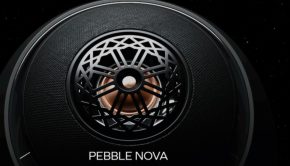BenQ launch new Low BLue Light – LBL – combatting the Blue Light Hazard
A decade ago, there were numerous reports detailing the suspected threat posed to our health from taking and making calls on the mobile telephone. As the technology was adopted mainstream many studies warned of the carcinogenic toxicity of the technology, but equally as many research projects found conflicting results leaving the public concerned and confused.
Now with more than five billion people globally subscribing to a mobile phone service, there is no conclusive evidence showing mobile phones are responsible for brain cancer, however new evidence is showing prolonged use of digital technology, including smartphones, tablets and PCs may have a detrimental effect on our vision.
Dr Celia Sanchez Ramos of Complutense University in Madrid has been investigating what is now being termed as the ‘Blue Light Hazard’ and her research predicts an epidemic of retinal problems due to increased exposure to LED lighting, which is incorporated into digital screens such as computer monitors and smartphones, as well as being commonly adopted into homes in domestic lighting applications and household appliances like televisions.
LEDs have many advantages when compared to other forms of lighting and are widely used with Governments in Australia funding a program to replace conventional light bulbs with environmentally friendly LEDs in all homes throughout the country. What wasn’t known then and is only now gaining attention is the effect the intense emissions of blue LED light is having on our health.
Explains Dr Jim Kokkinakis, a Sydney based Optometrist and University Lecturer (UNSW), “An LED light source produces light at the same frequency range as sunlight. We all know that staring into the sun isn’t good for our eyes, and now it is clear that staring at a computer screen for long periods is also harmful to our eyes, causing damage to retinal cells.
“In recent studies, high frequency light in the blue / violet band from 400-500nm in the visible spectrum has been linked to retinal injury and implicated as a cause of age-related macular degeneration,” explained Dr Kokkinakis, of The Eye Practice in Sydney.
“Those most at risk are children who are using electronic devices at a young age for both education and leisure activities, and those in professions where they are subjected to the blue light emissions for long periods of time on an ongoing basis,” he said.
“Computers are essential for our everyday existence and so few of us will be in a position to eliminate the risk screens are having on our vision by simply refraining from using them. However, the solution is as simple as filtering out the blue light from the LED, therefore exposing the eyes to a reduced dosage of the harmful emissions.
“The industry is aware of the recent research and manufacturers are now making ‘healthier’ screens blocking a significant portion of the blue light emissions. This simple measure then ensures the risk to our eyes and vision going forward is minimised. My advice to all Australians, particularly families with school-aged children, is to consider upgrading to a healthier computer monitor for homework and social networking,” he continued.
BenQ are a leading global manufacturer of digital panels and have adopted ‘eye care’ as their primary point of difference over competitors by phasing in Low Blue Light or LBL technology across their range of computer monitors making them the obvious choice for optimal eye health.
Martin Moelle, BenQ Australia’s managing director said BenQ’s unique LBL technology is designed to deal with the issue of blue light exposure and allows for healthier time spent in front of a computer. “We take this issue very seriously and have committed to incorporate what we like to refer to as ‘eyegonomics’ into our range, promoting our brand as one committed to eye health and general wellbeing,” he said.
BenQ’s LBL technology provides the user with four preset LBL modes:
Multimedia: reducing the levels of blue light by up to 30%
Web Surfing: reducing the levels of blue light by up to 50%
Office: reducing the levels of blue light by up to 60%
Reading: reducing the levels of blue light by up to 70%
Continued Moelle, “LED has been a great innovation for the health of our planet as it offers greater environmental benefits over previous lighting technology and uses far less energy conserving resources and saving on power bills, but on the flip side, research is showing that blue spectrum light which is emitted from LED light sources including computer monitors is one of the critical causes of eye damage, eye strain, headaches and sleeping disorders.
“As one of the world’s major suppliers of panels, BenQ are leading the charge to educate consumers on the perils of long-term computer use and are taking positive steps to counteract any negative health consequences associated with our technology,“ he said.
For further information on eye-care, please visit: http://www.benq.com.au/microsite/eyecare/au/index.html
Computer Vision Syndrome:
Computer Vision Syndrome or CVS is a very real and commonly diagnosed condition, which Wikipedia describes as being…”a temporary condition resulting from focusing the eyes on a computer display for protracted, uninterrupted periods of time. Symptoms include headaches, blurred vision, neck pain, redness in the eyes,, fatigue, eye strain, dry eyes, irritated eyes, double vision, vertigo and dizziness, polyopia, and difficulty refocusing the eyes.”
But of greater consequence, CVS is also thought to be having an impact on the incidence of Myopia (short-sightedness) with a study conducted by the National Eye Institute in the USA reporting the prevalence of near-sightedness increasing by around 66% over the past thirty years in America.
Sydney Optometrist Dr Jim Kokkinakis has taken a special interest in CVS and he believes that the incidence of Myopia has nearly doubled in Australia in one generation, and this, he says, is a direct consequence of the digital age.
“Today, kids rely heavily on computers as part of their everyday learning experiences at school and within the home,” he said. “Compounding their educational computer usage is their love of video games. Whether for work or pleasure many of us subject our eyes to the constant glare and flicker of a digital screen for a large portion of our day. The dramatic rise in ownership of smartphones and tablets, which coupled with modern day education and work practices involving extended use of PCs in the office and school environment, is causing our eye muscles to work harder and for longer periods,” said Dr Kokkinakis.
“CVS is similar to Carpal Tunnel Syndrome or any of the repetitive stress injuries that occur when carrying out the same motion over and over again,” he said.
“Working at a computer requires the eyes to continually focus and refocus. The repetitive nature of this process requires quite a lot of effort from the eye muscles and they are likely to fatigue over an extended period, leading to CVS.







